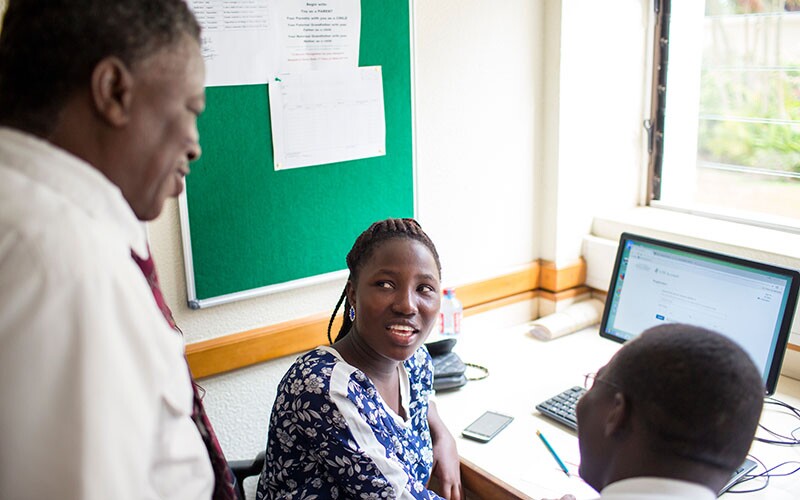If you’ve done much family history, you know that searching for information is a big part of it. We search in many places—in historical records, in the profiles of people in the FamilySearch Family Tree, and in photos, stories, and more.
In the past, Family Tree mobile app users had to search for each type of information in a different way. Now, FamilySearch offers a new unified search experience that allows users to search for everything in one place. There are other benefits too! Read on to learn what is changing.
How Is the New Search Experience Different?
The table below highlights the advantages of the new search experience compared to the old one.
Old Search Experience | New Search Experience |
| Depending on what you were searching for—Family Tree profiles, historical records, or memories—the search experience was different. | The new search offers a unified experience, allowing you to search for Family Tree profiles, historical records, and memories all at the same time. |
| Because each search experience was different, filtering search results was different too, making the filter process harder to understand and use. | The new experience offers simple but powerful filtering so you can find exactly what you’re looking for. |
| Some searches took users outside the app to the browser, making the experience inconsistent and potentially confusing. | The new search takes place completely within the app. |
| The old experience was fast. | The new experience is even faster. |
| The old experience did not number search results. | The new experience displays numbers on search results as you scroll. |
Using the New Search Experience
In the mobile app, you have two options for starting a search:
Option 1: At the top of the screen, tap the Search icon.
Option 2: Tap the menu icon, and then tap Search.
(The numbers above correspond to the numbers in the image below.)

Both options take you to a screen similar to the one below, where you can enter your search parameters:

After you click the Search button, the results are displayed on a screen similar to the following:

On this screen you can:
- Use the Filter option to narrow your search results.
- Edit the search parameters, and rerun the search.
(The numbers above correspond to numbers on the preceding image.)
As you scroll, you’ll see a number showing which search result you’re on:

Frequently Asked Questions
Here are answers to commonly asked questions.
When will I see the new search experience?
The new experience is being released in phases, first to Android users and then to iOS users. All users should see the new experience by the end of the year.
How can I tell if I have the new search experience?
You can tell if you have access to the new search experience based on what menu options you can see. The old menu has separate options for searching historical records and finding a person in Family Tree.

The new menu has a single search option:

What languages will this update be available in?
The update will be available in all supported FamilySearch languages.
Will the experience be the same for all languages?
Yes, the experience will be the same across all languages.
Is the unified search available only in the mobile app, or can I access it on the website?
The unified search is also available on the FamilySearch website.
Can I still search for historical records from the Sources section of a profile?
Yes, this feature is still available. To use it:
- Navigate to a person’s profile.
- Tap Sources.
- Tap the plus symbol.
- Tap Search Records.
If I don’t see the new experience yet, can I access a beta version?
Yes, you can access a beta version of the new experience by following these steps:
- On your Android device, go to the Play Store, and find the FamilySearch Tree app page.
- Scroll down until you see "Join the beta."
- Tap Join. You’ll see a message that says, “Joining beta.” If you don’t see a change after a few minutes, search for the Family Tree app again. You should now see “FamilySearch Tree (Beta)” at the top of the page.
- To install the beta version of the app, tap Update (if it is available).
As of the date this article was published, the beta version is available only for Android phones. A beta for iOS will be available before the end of 2025.
Your Feedback Requested!
FamilySearch is always interested in feedback. To give feedback on the new search experience, do the following:
- Tap the Menu icon.
- Tap Help.
- Tap Contact Us.
- Tap Give App Feedback.
Related Articles
At FamilySearch, we care about connecting you with your family, and we provide fun discovery experiences and family history services for free. Why? Because we cherish families and believe that connecting generations can improve our lives now and forever. We are a nonprofit organization sponsored by The Church of Jesus Christ of Latter-day Saints. To learn more about our beliefs, click here.





